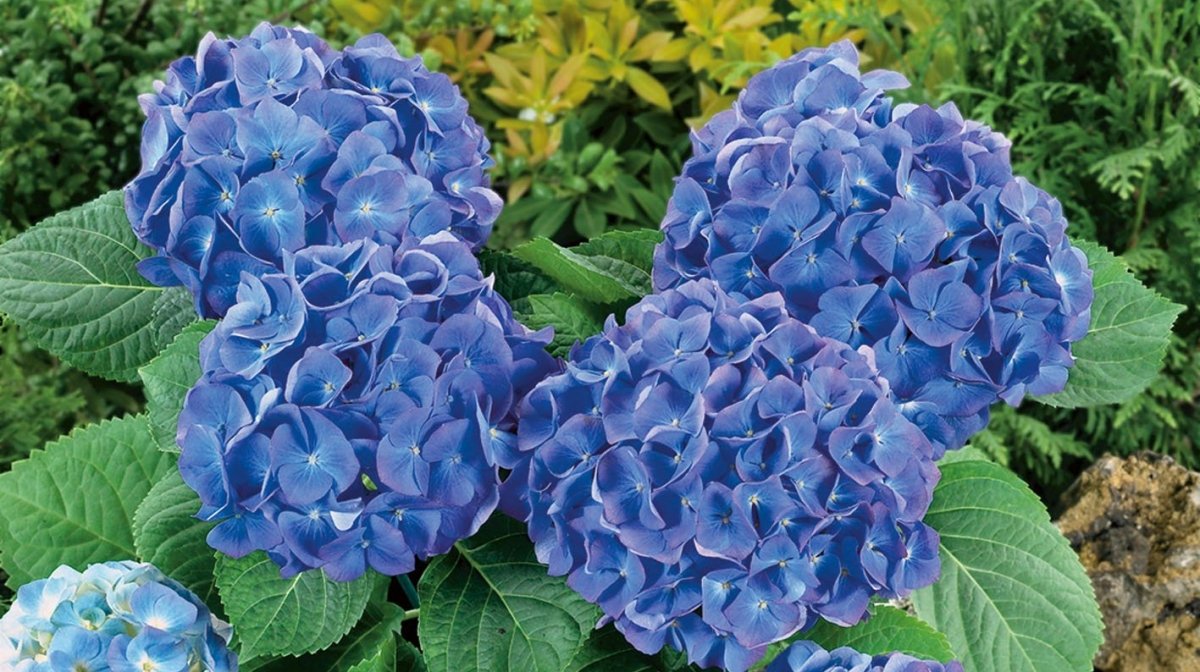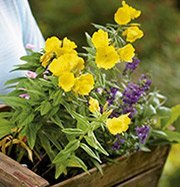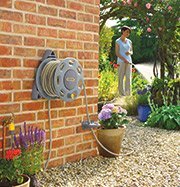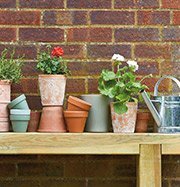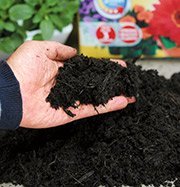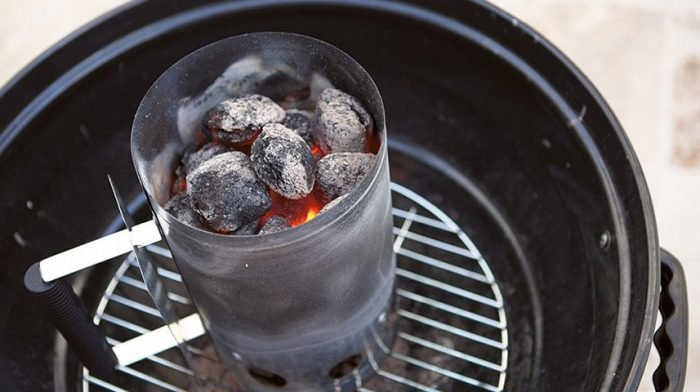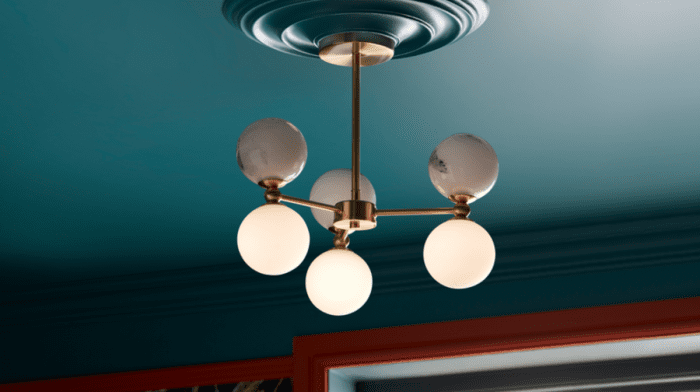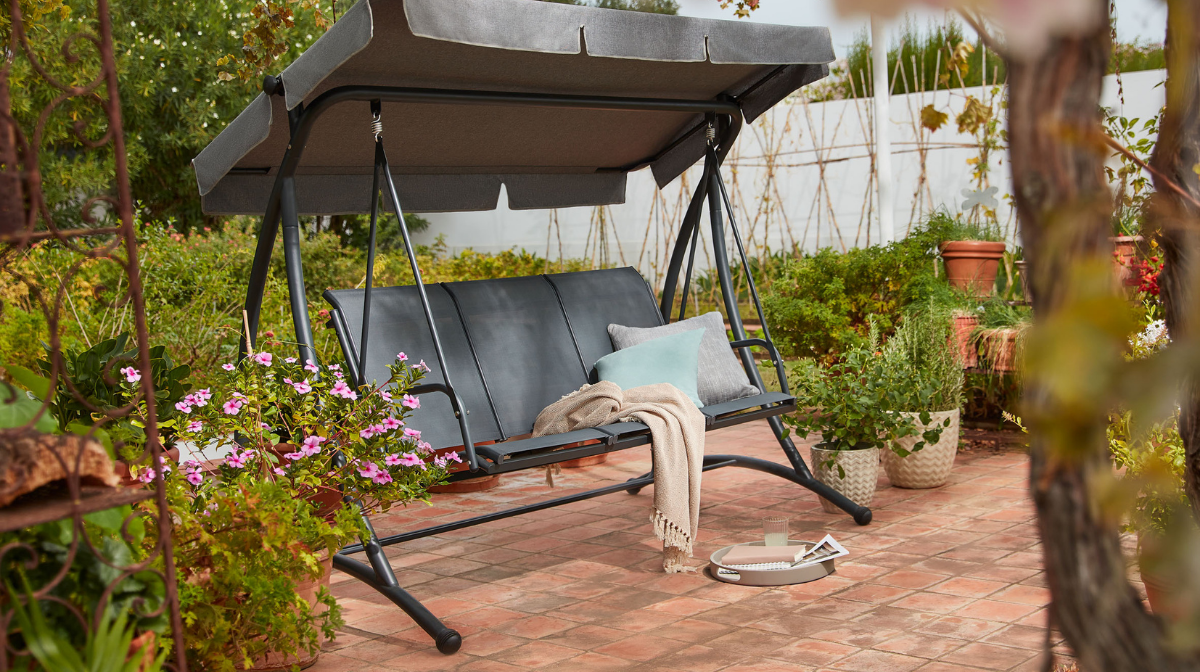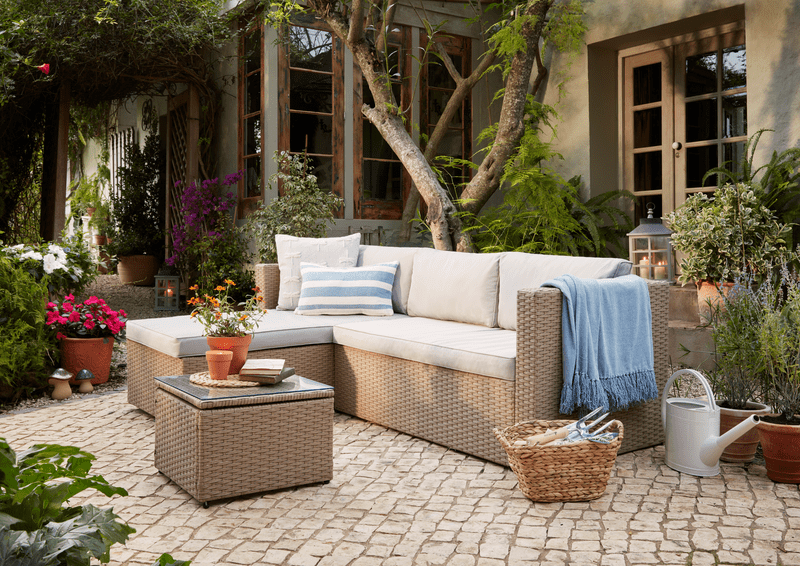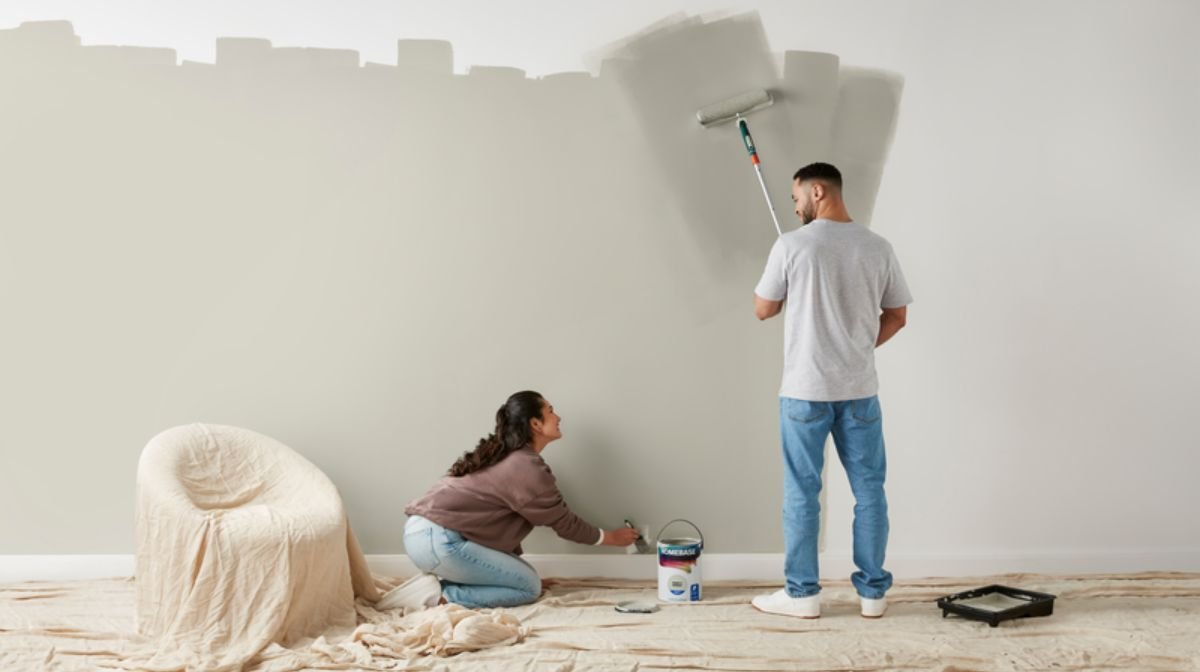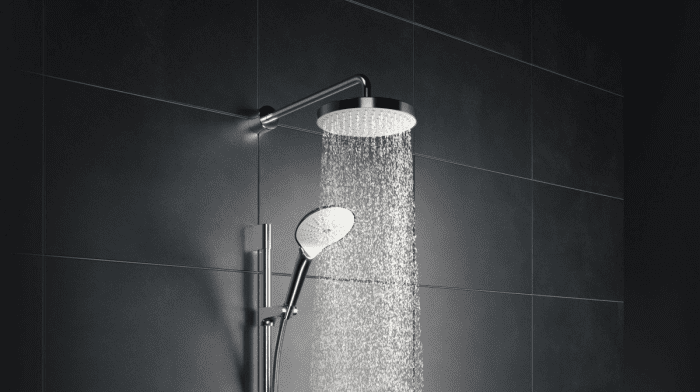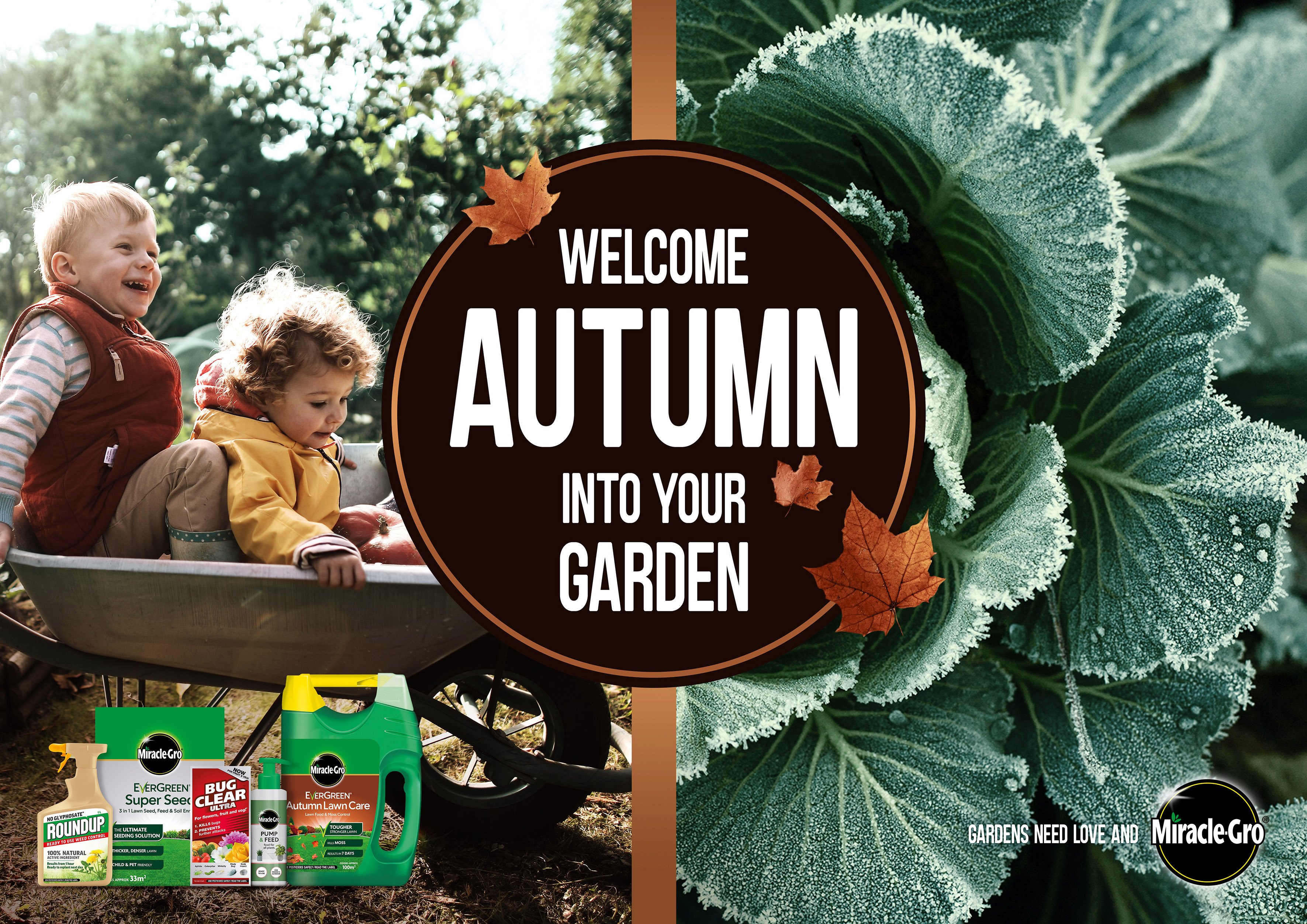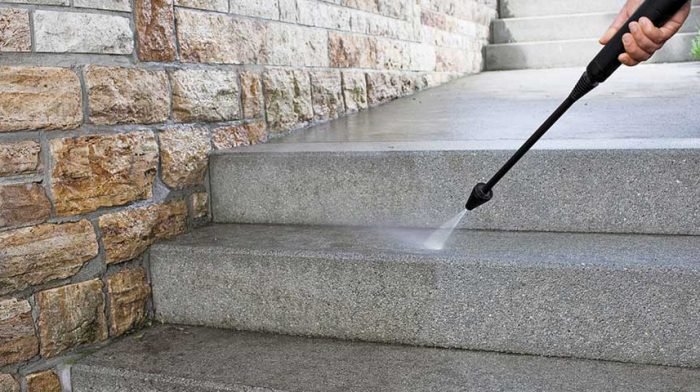How to plant
The way you get different plants into the soil can differ depending on the type of plant you’re dealing with. In this guide, we’ll help you find out how to plant some of the most popular types of plants, so you can get them growing beautifully in your garden in no time at all.
How to plant a shrub
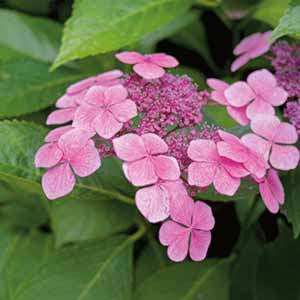 You can plant container-grown shrubs at any time of the year, except when the soil is frozen or waterlogged. However, autumn is the ideal time for planting because the soil is still warm enough to encourage some root growth before winter.
You can plant container-grown shrubs at any time of the year, except when the soil is frozen or waterlogged. However, autumn is the ideal time for planting because the soil is still warm enough to encourage some root growth before winter.
- To get started, dig a hole at least twice as wide as the shrub’s container and just as deep, as you need to plant the shrub at the same depth as it was in the pot. Mix the soil you’ve removed with some compost and leave it to one side.
- Water the shrub thoroughly and allow the pot to drain. Gently lay it on its side and with one hand supporting the shrub, ease the root ball out of the pot.
- Carefully pull out any roots that are circling around the bottom or sides of the pot, so they grow away from the root ball and into the surrounding soil. Position the shrub in the centre of the hole, then fill in the soil around the sides, firming it down as you go.
- Once you’ve filled the hole, water the shrub again using at least one full watering can.
- Cover the soil with a generous layer of mulch – this will help prevent weeds and reduce the amount of water loss from the soil.
How to plant climbers
 The key to success when planting a climber is to make sure the soil is in good condition and the roots are away from the dry conditions found at the base of a wall. You can plant container-grown climbers at any time of the year, except when the soil is frozen or waterlogged.
The key to success when planting a climber is to make sure the soil is in good condition and the roots are away from the dry conditions found at the base of a wall. You can plant container-grown climbers at any time of the year, except when the soil is frozen or waterlogged.
- Before planting your climber make sure there’s a suitable framework like a trellis to support it in its new home. If you’re planting against a wall or fence make the planting hole about 45cm away from the base to avoid the dry soil found in these areas.
- Nearly all climbers need planting at the same depth as in the pot, so make sure you dig a hole that is deep enough and at least twice as wide as the container. Mix the soil you’ve removed with compost and leave it to one side.
- Water the climber thoroughly and allow it to drain before easing it out of the pot.
- Carefully pull out any roots that are circling around the bottom or sides of the pot and position the climber in the centre of the hole, leaning it back towards the bottom of the support at 45°. Fill in the gaps around the sides of the plant with soil, firming it down as you go.
- Once you’ve filled the hole, water the climber again using at least one full watering can, then cover the soil with a layer of mulch.
- Untie the climber from the support cane it came with and space out and tie in all the stems to the trellis.
How to plant herbaceous perennials
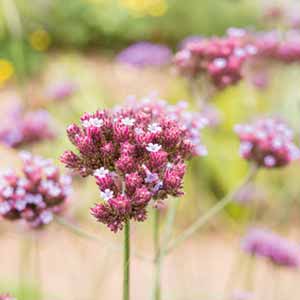 You can plant container-grown herbaceous perennials at any time of the year, except when the soil is frozen or waterlogged.
You can plant container-grown herbaceous perennials at any time of the year, except when the soil is frozen or waterlogged.
- Dig a hole at least twice as wide and around the same depth as the perennial’s container. Mix the soil you’ve removed with compost and leave it to one side.
- Gently tip the plant out with one hand on top of the compost to support it, taking care not to damage any emerging shoots.
- Put the perennial in the centre of the hole then fill in the gaps around the sides of the plant with the soil mixture, firming it down gently to make sure it’s secure.
- Water the perennial well, then cover the soil with a layer of mulch. Keep the mulch at least 5cm clear of the base of the plant, otherwise you risk scorching the foliage and encouraging rot to set in.
Shop all herbaceous perennials
How to plant bedding plants
 Tender bedding plants should be planted out after the risk of frost has gone, but autumn, winter and early spring bedding can be planted at any time. If you are buying very young plants or growing your own from seed you will need to harden them off before the final planting by moving them to a protected area such as a cold greenhouse or cold frame for a couple of weeks before they are ready to plant out.
Tender bedding plants should be planted out after the risk of frost has gone, but autumn, winter and early spring bedding can be planted at any time. If you are buying very young plants or growing your own from seed you will need to harden them off before the final planting by moving them to a protected area such as a cold greenhouse or cold frame for a couple of weeks before they are ready to plant out.
- Before planting your bedding plants in a bed or border, use a garden fork to make sure the soil surface is level and to break down any large clumps. You’ll need to dig a hole that is as deep as the plant’s container and slightly wider. Use a hand trowel or your fingers for smaller plants. If you’re planting in a container or hanging basket make sure you use a suitable compost and add in some slow release fertiliser and moisture retaining gel.
- Water the plants well before planting and allow them to drain before removing them from their growing container. If they’re in pots, remove them by tipping them upside down and supporting the rootball with the plant between 2 fingers. Then give the base of the pot a couple of sharp taps with your trowel to loosen it completely. If they are in packs then gently tease them out by pressing the base of the pack and pushing them upwards.
- Position the plant in the soil by holding it at the rootball and firming the soil down around it. Water thoroughly after planting.
How to plant a tree
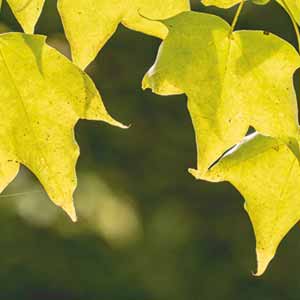 Container-grown trees can be planted at any time of the year, except when the soil is frozen or waterlogged, but autumn is the ideal time. Bare-rooted trees – those sold without any soil on their roots – should be planted during the dormant season only (November to March).
Container-grown trees can be planted at any time of the year, except when the soil is frozen or waterlogged, but autumn is the ideal time. Bare-rooted trees – those sold without any soil on their roots – should be planted during the dormant season only (November to March).
- Dig a hole that is at least 3 times as wide and twice as deep as the tree’s container. Loosen up the soil at the base of the hole with a fork and add some fertiliser and organic matter. Mix the soil you’ve removed with compost and leave it to one side.
- Trees over 1.5m tall at planting time will establish more quickly if their roots are held firm. The best way to do this is to hammer a 1.2m (4ft) stake in at 45° after digging the planting hole.
- Give the new tree a thorough soaking by standing it in a bucket of water for a couple of hours before it’s planted. To remove the tree from its container, lay it on its side, tap the rim of the container and then slide it out. Carefully pull out any roots that are circling around the bottom or sides, then position the tree in the centre of the hole next to the stake if you’re using one.
- Start to fill in the sides of the hole with soil, firming it down as you go. Shake the trunk of bare-rooted trees before firming the first layer to make sure soil trickles down between the roots. Once the hole has been filled, water thoroughly once again, before covering the soil with a generous layer of mulch. If the tree is grafted, make sure it is not planted too deep as it is important the graft union is not buried.
- After planting, attach the top of the stake nearest the trunk to the tree using an adjustable tree tie with a protective spacer. This will hold the tree securely and prevent it from rubbing against the stake in windy weather.
How to plant bulbs in autumn
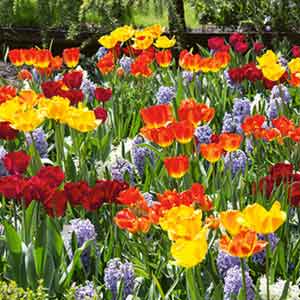 This is the best time to plant bulbs so they can develop strong roots before winter sets in. If you notice gaps in your garden at certain times of the year, choose bulbs that will bloom in these months to give your garden bursts of colour.
This is the best time to plant bulbs so they can develop strong roots before winter sets in. If you notice gaps in your garden at certain times of the year, choose bulbs that will bloom in these months to give your garden bursts of colour.
- Decide whether to use pots, containers or a border to plant your bulbs in. Note that a border needs 25 to 50 bulbs, in clusters of about six, to look really impressive.
- To plant your bulbs, first work out the correct planting depth by measuring the bulbs from base to tip, then multiply this two to three times. For example, a 5cm bulb should be planted 10-15 cm deep.
- Use a hand trowel to dig a hole for your bulb, place the bulb in the hole with its ‘nose’, or shoot facing upwards, replace the soil and gently firm down, then repeat for the rest of the bulbs.
- Water the area, making sure you keep the soil moist for the first few weeks.
How to plant bulbs in spring
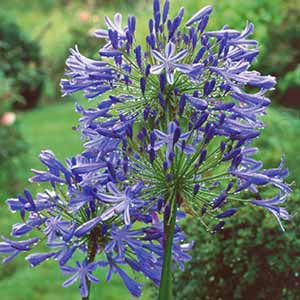 Now is the perfect time to be thinking about planting summer flowering bulbs to give you long lasting blooms that will thrive until late Autumn. Plants such as Dahlias, Lilies and Agapanthus and perfect for borders or large containers on the patio and are ideal to brighten up your garden or use as cut flowers to bring a little part of your garden into your home. Most bulbs for summer colour will want to be positioned in full sun to semi shade and will require free draining, fertile soil. If planting in containers then use a
Now is the perfect time to be thinking about planting summer flowering bulbs to give you long lasting blooms that will thrive until late Autumn. Plants such as Dahlias, Lilies and Agapanthus and perfect for borders or large containers on the patio and are ideal to brighten up your garden or use as cut flowers to bring a little part of your garden into your home. Most bulbs for summer colour will want to be positioned in full sun to semi shade and will require free draining, fertile soil. If planting in containers then use a
multi-purpose compost and add some
slow release fertiliser. Care may differ between different plants so take a look at the individual packs for more detailed planting advice.
How to plant in containers and pots
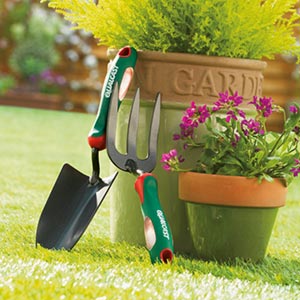 Whether you’re looking to brighten up the kitchen, start an indoor herb garden or add a new dimension to your garden landscape, a container or pot could be the perfect option.
Whether you’re looking to brighten up the kitchen, start an indoor herb garden or add a new dimension to your garden landscape, a container or pot could be the perfect option.
Before you start planting flowers in pots you’ll need to choose the perfect container. Think about the following things as you decide:
- If you’re planting outside, opt for a frost-proof pot so it doesn’t crack or become damaged by the elements.
- If you’re planning to grow a large plant, think about using a lightweight plastic pot, to make it easier to manoeuvre.
- Make sure the pot or container is big enough to accommodate the roots of the plant you’re growing.
- Check that your pot has good drainage to avoid waterlogging a plant.
Planting your container:
- Start by placing a layer of stones or pebbles at the bottom of your pot to encourage good drainage.
- Fill the rest of your pot or container with container compost. Leave a gap of two to three inches at the top so you can position your plants.
- With your hand trowel, dig a small hole and place the plant into the hole, making sure the top of the roots is level with the surface of your compost.
- Use your hands to firmly press the compost around the root ball until it’s secure.
- Water generously and regularly use plant feed to help keep the soil rich and nutritious.

